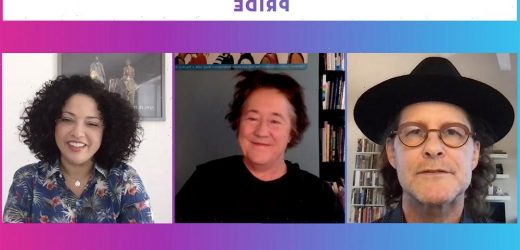In the 1950s, LGBTQ people in America ran the risk of being ostracized from their communities, fired from their jobs, harassed or arrested. The Lavender Scare in that decade purged countless gay men and lesbians from employment in the federal government. And yet, the new FX series Pride reveals many LGBTQ Americans managed to find joy and contentment despite hostility from the prevailing culture.
The six-episode show, which premieres on the network May 14, is all about reframing our understanding of the LGBTQ rights movement.
“People were living rich, full lives and their lives weren’t completely defined by the oppression that they dealt with every single day. And there’s something about that that is extraordinarily transformative,” executive producer Christine Vachon said during an appearance at Deadline’s Contenders Television: Documentary + Unscripted awards-season event. “One of the things our series does is show people all those different threads and different types of resistance and different people that were there and trying to figure out those paths before Stonewall and afterwards. It just gives people a much richer picture of the movement and the people in it.”
Each episode is devoted to a different decade, with a different filmmaker handling each one.
“That was a really big goal of the series for each decade that we did, was to chronicle and highlight the struggles that went through with each decade,” said executive producer/showrunner Alex Stapleton, “but to also highlight the love and the joy and the spirit and the happiness that communities would find.”
Pride gives space to lesser known people in the movement and to historical incidents that played an important role advancing LGBTQ rights but have been largely overlooked.
“We wanted to kind of shed light on…activists, people who haven’t had films made about them or haven’t had books necessarily written about them, people that are a little bit—you kind of have to scratch the surface a little bit to find out more about who they were and the contributions that they made,” Stapleton said. “We really felt like a platform like this, it was our duty to do a deep dive and to really dig and to bring forward stories that have not really been told en masse.”
The series also makes it clear the LGBTQ community has never been a unified whole, with all of its constituent members in lockstep on the march toward equality.
“One thing that we said to each other over the course of making this project was that the queer community, the LGBT+ community, is not a monolithic culture,” Stapleton said. “It was really, really important…to broaden a light on who we were shining a spotlight on because we really were very dedicated to giving voice to people that also have been marginalized within the gay and lesbian civil rights struggle.”
Check back Monday for the panel video.
Read More About:
Source: Read Full Article

